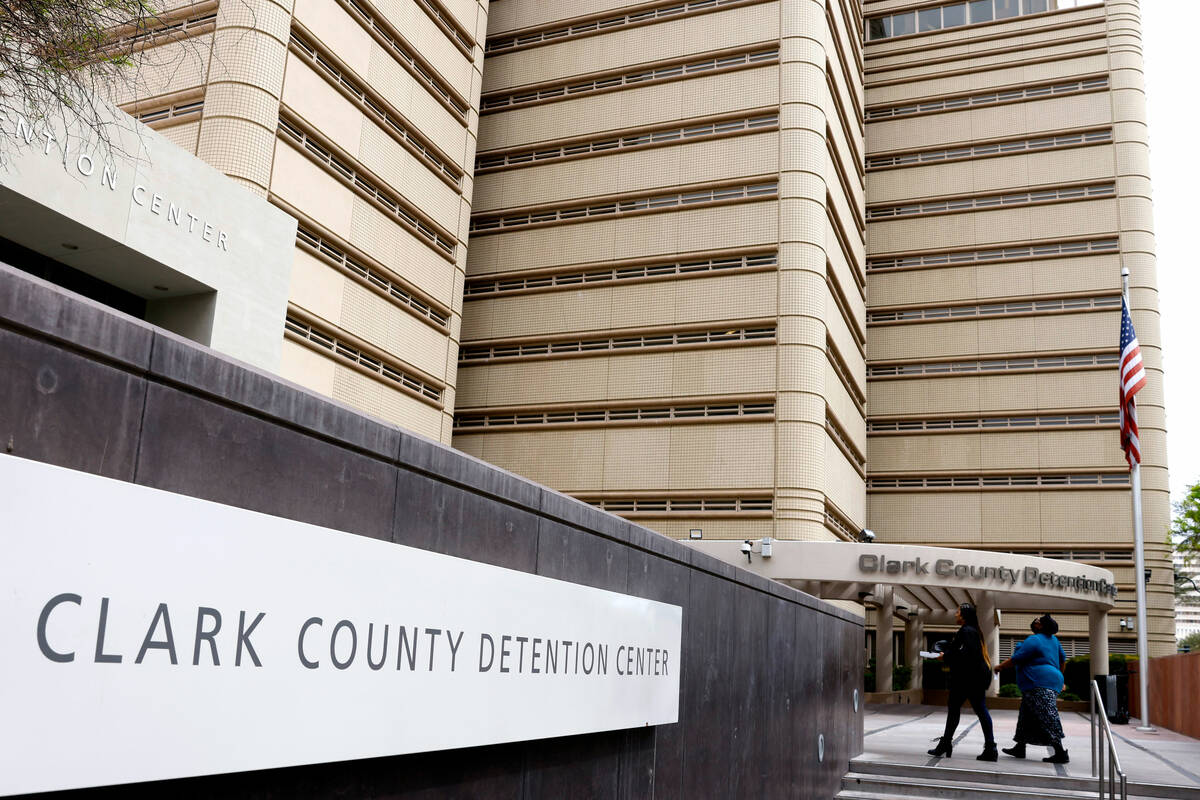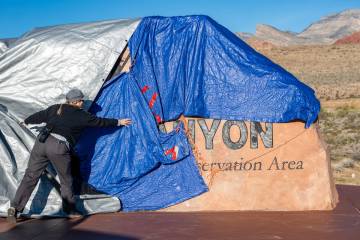Sheriff confirms Las Vegas police deal with ICE to turn over undocumented inmates
The Metropolitan Police Department is re-entering into a formal agreement with U.S. Immigration and Customs Enforcement that would allow officers to conduct immigration duties at the Clark County Detention Center.
The version of the 287(g) program Metro petitioned to enter allows corrections officers to serve ICE warrants and hold jailed undocumented or wanted migrants for an extended period of time, giving the federal government an opportunity to pick them up.
Metro leadership signed the memorandum of agreement on Friday, a day after the Department of Homeland Security included the city of Las Vegas in a list of hundreds of so-called “sanctuary” jurisdictions for undocumented immigrants.
Las Vegas Mayor Shelley Berkley and Gov. Joe Lombardo quickly disputed the sanctuary designation, which threatens to pull federal funding from jurisdictions the Trump administration deems to not collaborate with federal immigration enforcement.
Clark County Sheriff Kevin McMahill told the Las Vegas Review-Journal on Wednesday that the classification also caught Metro by surprise, but he said it wasn’t the reason that led to the ICE agreement.
The move had been contemplated for “several weeks,” McMahill said. He said it followed discussions between ICE and the National Sheriffs’ Association and the Major County Sheriffs of America about alleged criminal offenders being released back into communities.
Metro was one of 83 law enforcement agencies with pending agreements, with hundreds more already formally collaborating, according to an ICE database.
“Once approved, Clark County Detention Center Services officers will be trained, and an implementation period will begin,” the department said Wednesday.
Limited to jail
Metro is entering a “warrant service officer” agreement, which is limited to the jail.
Several officers will go through eight hours of training, McMahill said.
Under current policy, Metro notifies ICE when booking migrants suspected of living in the country illegally who are accused of violent crimes, DUI and domestic violence. Police then tell agents when the inmates are going to be released, giving the agency a chance to take custody of them when they walk out.
The list of reportable charges was expanded to include theft-related offenses after President Donald Trump signed the Laken Riley Act earlier this year.
McMahill said he expects that Metro won’t need to invoke 287(g) powers often because ICE already conducts daily pickups from the jail.
As of Tuesday, about 350 people held in the Clark County Detention Center had been flagged for ICE, McMahill said. He said jail population fluctuates daily with an average of 250 overall daily arrests.
Metro, which doesn’t conduct immigration enforcement outside the jail, said no other changes were made to its immigration policy.
The American Civil Liberties Union of Nevada said Metro did an about-face despite previous assurances that the agency wouldn’t “detain people for ICE or use Nevada Resources to enforce federal immigration laws,” wrote senior staff attorney Samira Ramic in a statement. “Yet that’s exactly what (Metro) is doing by entering into the 287(g) agreement.”
Nearly 300 migrants flagged by the city this year
The city of Las Vegas also has an informal agreement with ICE at the municipal jail.
Nearly 300 migrants had been flagged from January through May, compared with just two during the same time period last year, a city spokesperson said Tuesday, citing the Laken Riley Act for the substantial increase.
DHS quietly removed the list of supposed sanctuary jurisdictions over the weekend. The agency did not respond to media inquiries asking how Las Vegas ended up on the list or why the listing disappeared.
The list was prepared through a late-April executive order signed by Trump, who vowed on the campaign trail to launch “the largest deportation program of criminals in the history of America.”
“Designation of a sanctuary jurisdiction is based on the evaluation of numerous factors, including self-identification as a sanctuary jurisdiction, noncompliance with Federal law enforcement in enforcing immigration laws, restrictions on information sharing, and legal protections for illegal aliens,” a DHS spokesperson wrote to the Las Vegas Review-Journal last week. “The list is actively reviewed, will be regularly updated, and can be changed at any time.”
The city of Las Vegas and Metro had participated in the 287 (g) program but withdrew in 2019 following a court decision that raised concerns about the program’s constitutionality.
McMahill said the current model doesn’t require police officers to be deputized as ICE agents.
Ramic said Metro suspended its previous agreement because Nevada did not have a statute that allows immigration arrests. “That hasn’t changed,” she added.
“Threats from the President of the United States to target jurisdictions who refuse to cave to their demands do not override constitutional limits or Nevada law,” Ramic said. “(Metro) must uphold its duty to our communities, not do the federal government’s bidding at the expense of public trust and safety.”
The sheriff’s offices in Douglas and Mineral counties also have signed up for ICE’s “warrant service officer” agreements. As of Wednesday, they were the only two Nevada agencies that participate in the program.
Contact Ricardo Torres-Cortez at rtorres@reviewjournal.com.


















